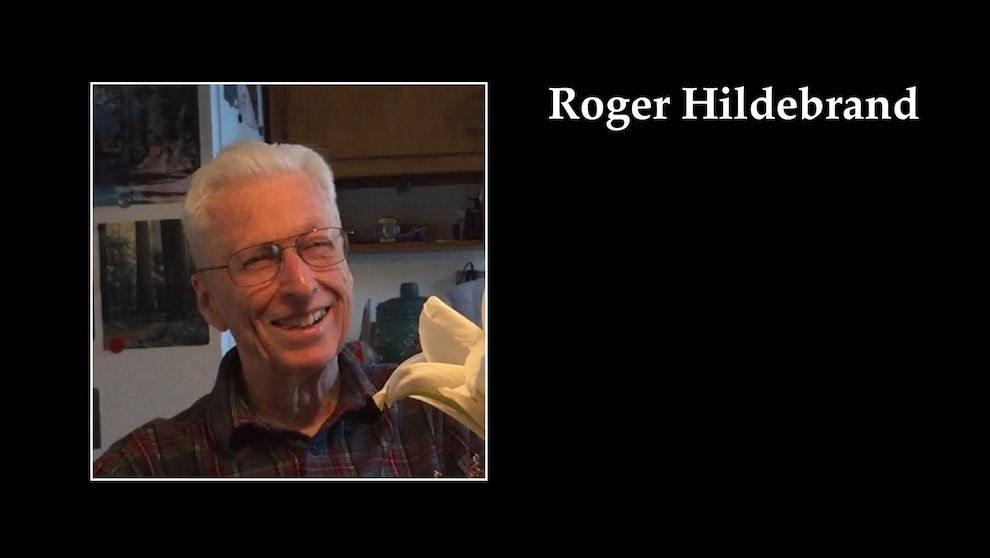From Don and Liz Healy:
On the evening of March 31st, 2004, while visiting Jane and Roger Hildebrand at their home in Chicago, Roger described his experiences in the days immediately following the Japanese attack on Pearl Harbor, on December 7th, 1941:
At the time, Roger was an undergraduate chemistry student at the University of California , Berkeley . As he exited a final exam on December 12, Dr. Ernest O. Lawrence, for whom the Lawrence Radiation Laboratory is now named, was waiting outside the classroom door and basically button-holed Roger, saying “I want you”. “You do want to help the war effort?” Roger acknowledged that yes he would like to help. Lawrence quickly took Roger up to the Cyclotron on the University of California campus where he and Dr. Glenn Seaborg were creating two new elements, neptunium and plutonium by bombarding already known elements with a particle stream to create new ones and then to determine the properties of very tiny amounts of the new elements. Lawrence told Roger to stand behind the operator (Fred Schmidt, a grad student and later a professor at the University of Washington ) and to wait until the operator could explain the operation and control panel to Roger. Roger dutifully waited about an hour, until the operator abruptly turned around and brusquely asked Roger, “What’s your name?” Roger told him and was then given very brief instructions: if the needle on this meter goes beyond here, turn this dial; if this one here moves beyond this point turn this knob here. This was Roger’s introduction to physics; remember, he had been chemistry major.
The control panel for the cyclotron was a rather jury-rigged affair that magnified the possibility for error. It was decided that it would be worthwhile to invest in a wood cabinet and rewire the panel to create a more functional system. A day or to later, having taken a day to set up the new control panel, the crew was admiring their work when a Hispanic-looking gentleman walked into the control room, examined the new installation and proceeded to berate those assembled for their waste of time and money when both were needed for the war effort. This gentleman turned out to be General Leslie Groves, who was later to be in charge of the Manhattan Project. At this instant however, he had taken a wrong turn in the hallway, and had no jurisdiction over the folks he was berating.
Later, while still at Berkeley , Roger was working on his particular task which was to design a cathode that was to be used in the process of separating the fissionable uranium 235 isotope from the uranium ore. Uranium 235 makes up only 0.7% of natural uranium. After Roger had completed his calculations and had tested a small prototype in the lab, Lawrence came over to his work station, and conferred with Roger about what was required to make a full-sized system. The cathode with its associated power supplies and control electronics was quite expensive to produce, and it was Roger’s expectation that only one would be needed. However, after asking Roger if he felt that his calculations were correct, Lawrence picked up the phone at Roger’s work station and placed an order for the material to build over 700. Roger was stunned by the magnitude of the order and spent the next twenty-four hours checking and double-checking his prior efforts.
Dan Hildebrand, Roger’s son, created video recordings of Roger reciting his recollections of the various portions of Roger’s very exciting life, from early childhood, to his involvement in the Manhattan Project during WWII, and into his research in nuclear physics and later astro-physics, at the University of Chicago with Enrico Fermi and others, and into additional aspects of his life. The audio recordings of Dan’s efforts can be accessed by clicking on the each of the nine links to the right of Roger’s photograph. Thank you Dan for your excellent and important efforts.

